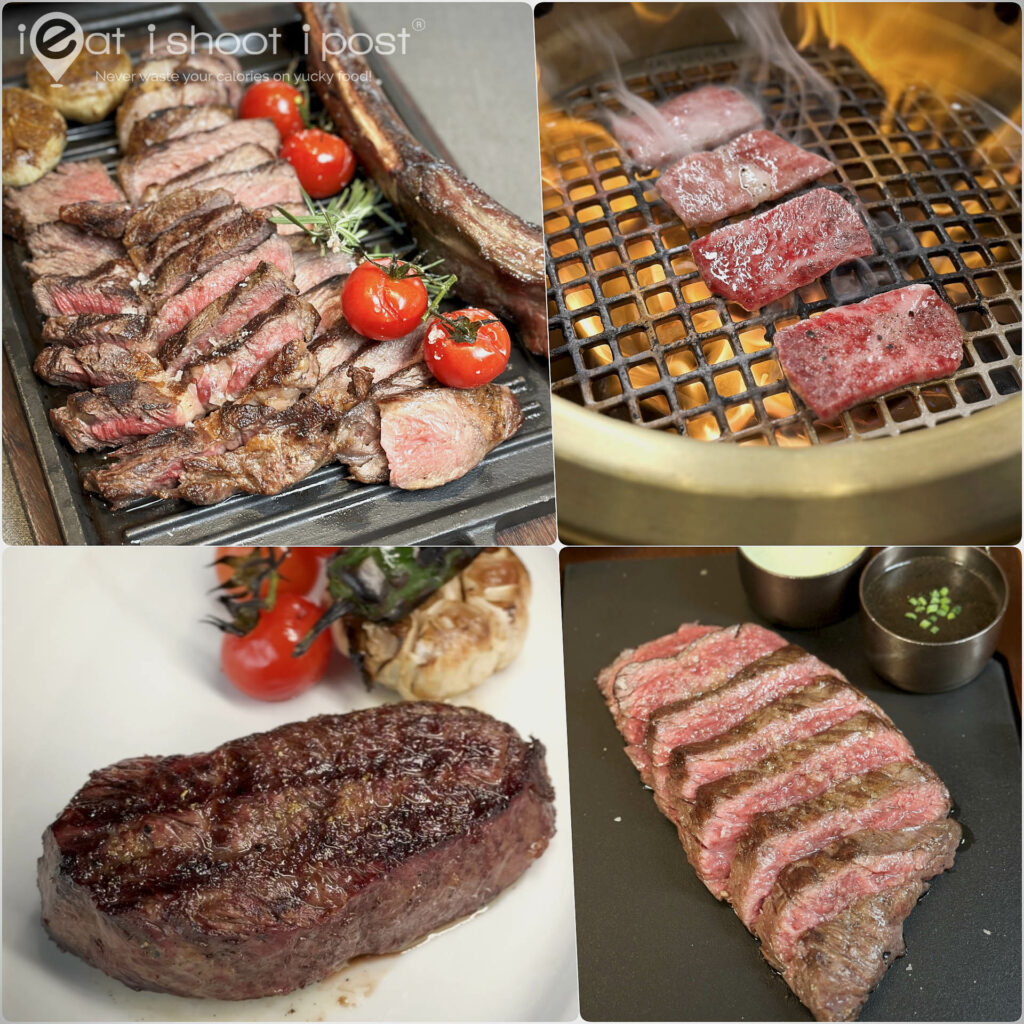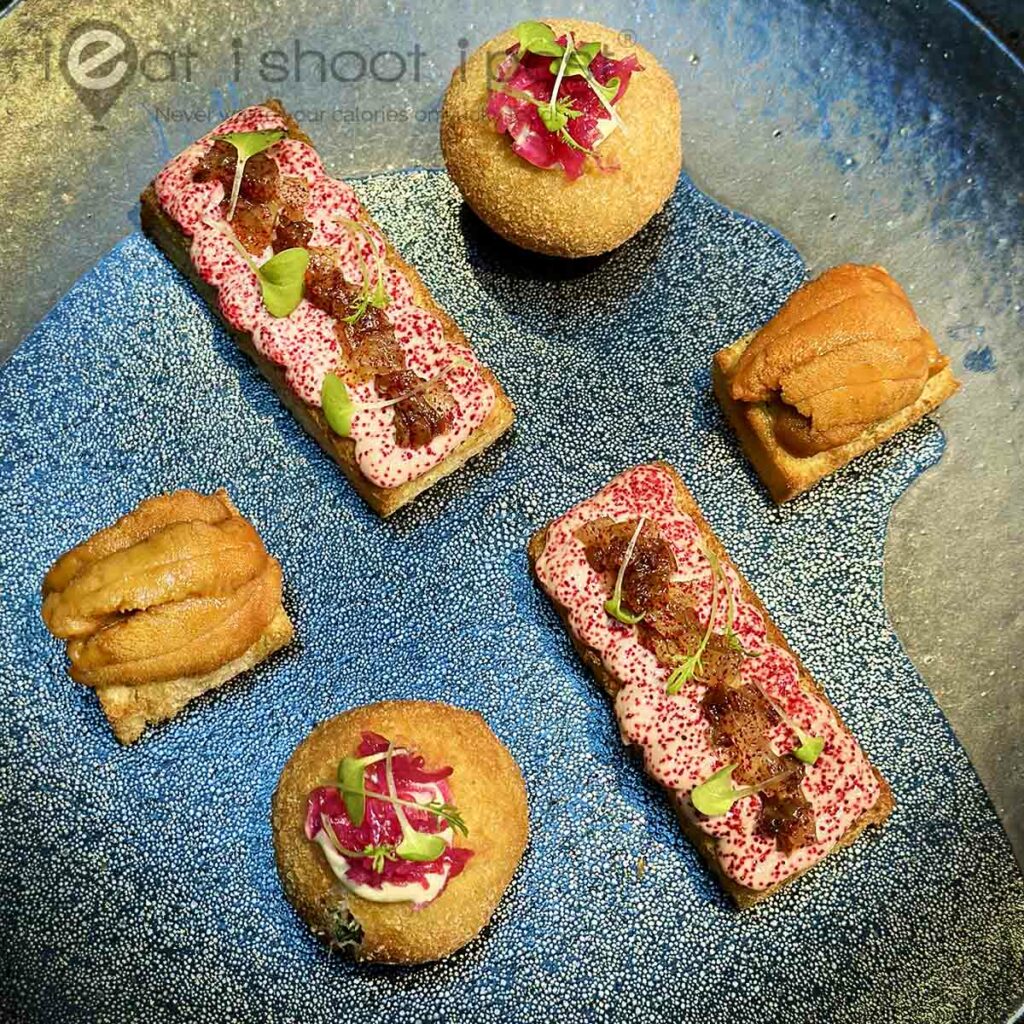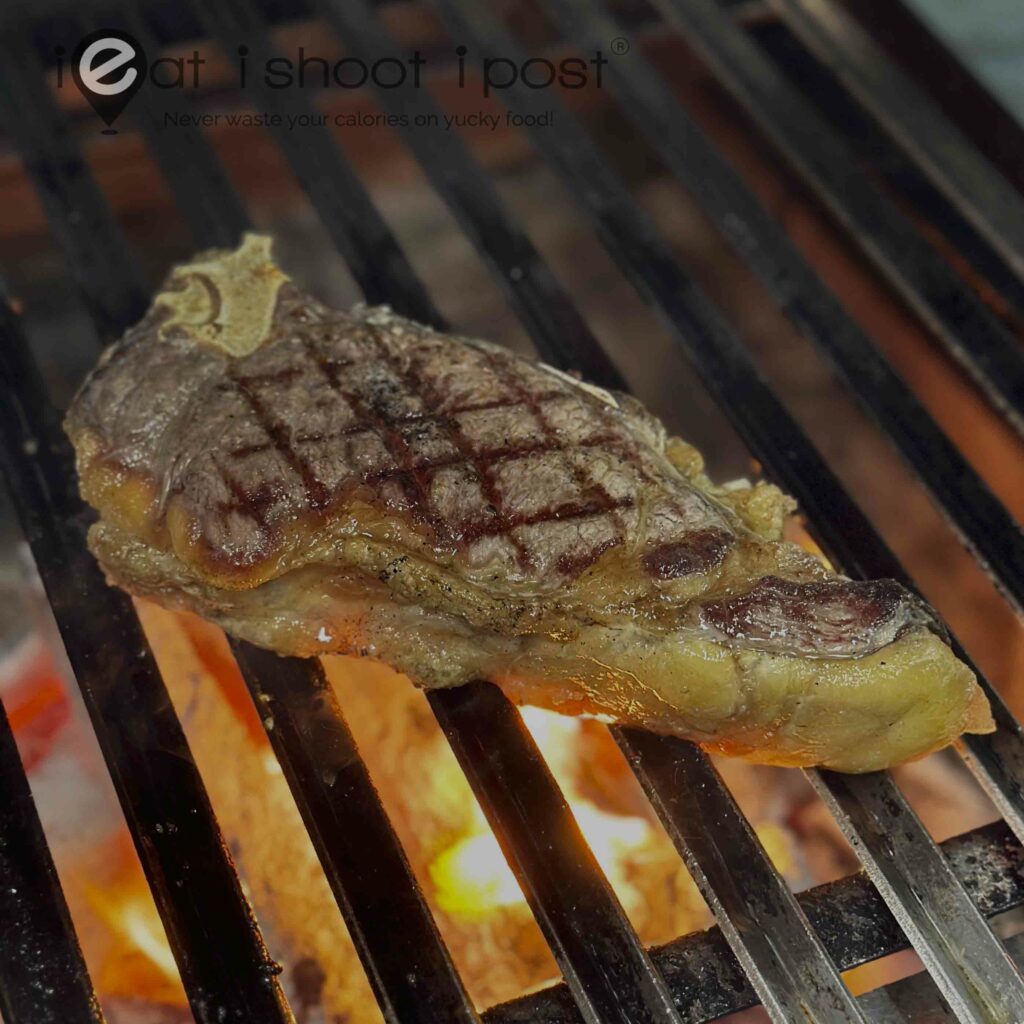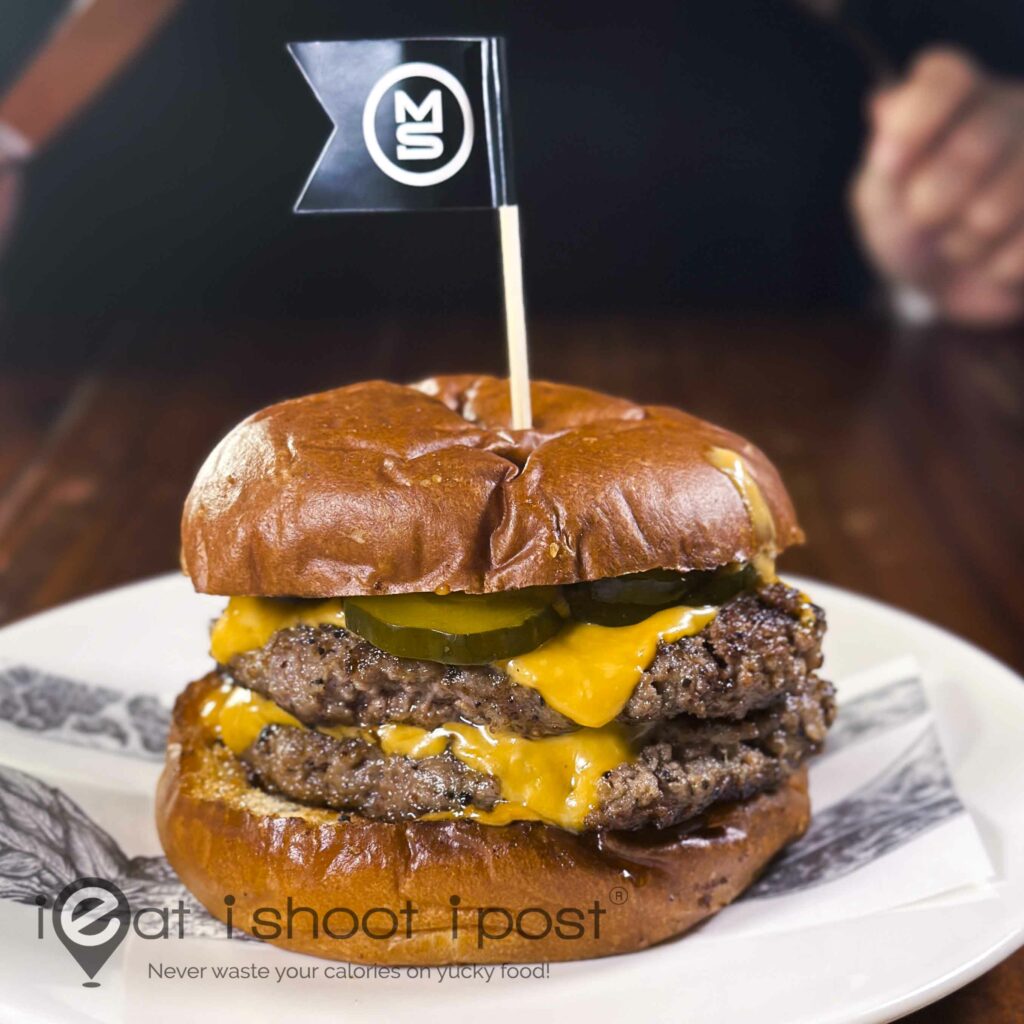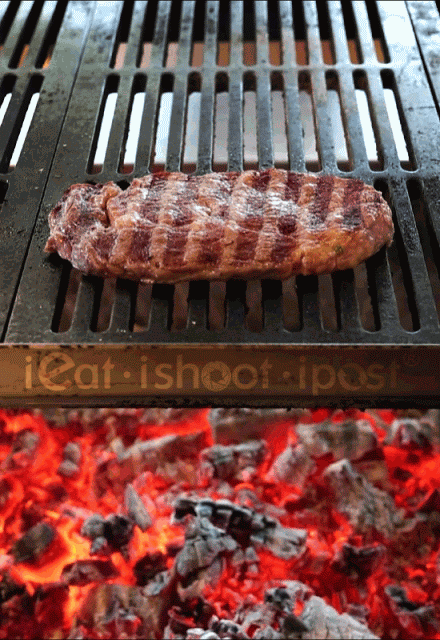
There are two things about Skirt that I am very excited about. Firstly, they are the first steak house in Singapore who are aging their own beef and secondly, they are one of the few to use an Argentinian Parilla to grill their meat! In a market where the competition for the patronage of serious beefeaters is getting more competitive, I think that these two factors make Skirt stand out from the rest. Sure, aged beef has made its debut in Singapore in recent years, but they have all been done by the suppliers like Indoguna and Culina. So, when I walked pass Skirt about 2 weeks ago and saw their meat hanging in the aging cabinet, I knew that I had to write about it!
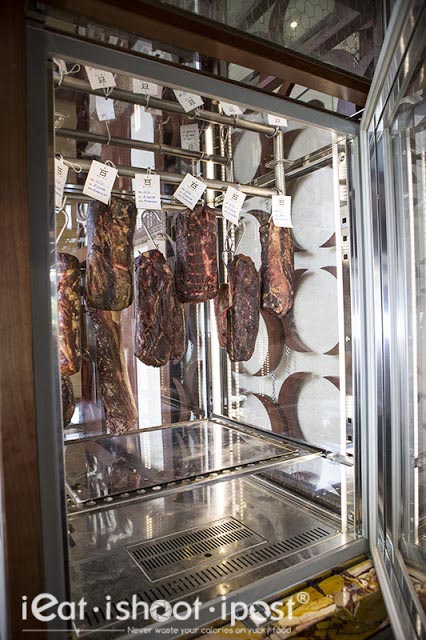
The process of aging essentially dries out the meat and encourages controlled decomposition such that the meat becomes more tender and flavourful. During the aging process, bacteria start to breakdown the meat proteins into umami rich amino acids. When I was in Chicago, I managed to taste the 55 day dry aged ribeye at David Burke’s Primehouse and it is very different from steaks that have not been aged. One big difference is that you don’t get the blood red juices oozing out of the meat when you cut into it even if it was cooked medium rare. That is because most of the water has been lost in the aging process and so the flavour is more concentrated. The meat also takes on a distinct musky flavour akin to that of bluecheese which gives it that extra umami punch.
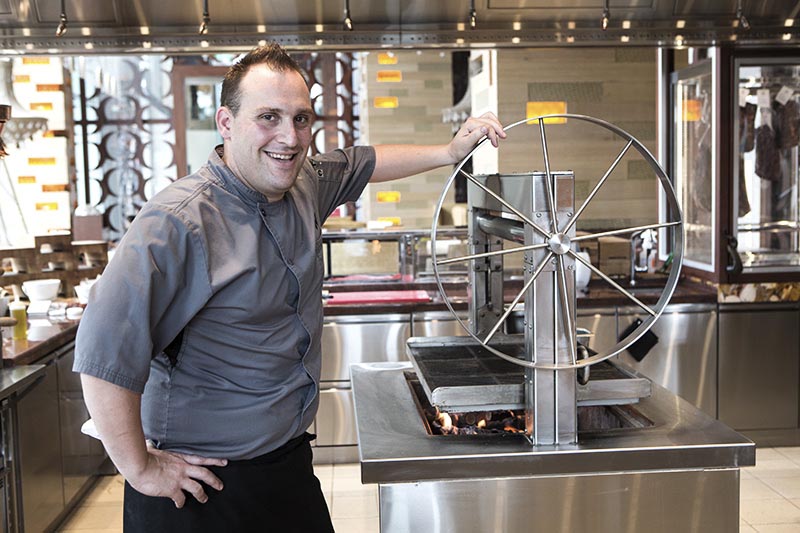
When you visit a steakhouse and they tell you that their meat is aged, your next question should be “Wet or dry aged?”. A lot of places say that their meat is aged but its wet aged. What they do is to vaccum pack their meat and leave it in the fridge for a week or two. This form of aging does help to tenderize the meat a little, but wet aging is only going to get me as excited as having ice kachang in Iceland. Heck, I can even do it at home, just buy a piece of meat that is already vacuum packed and leave it in the fridge!
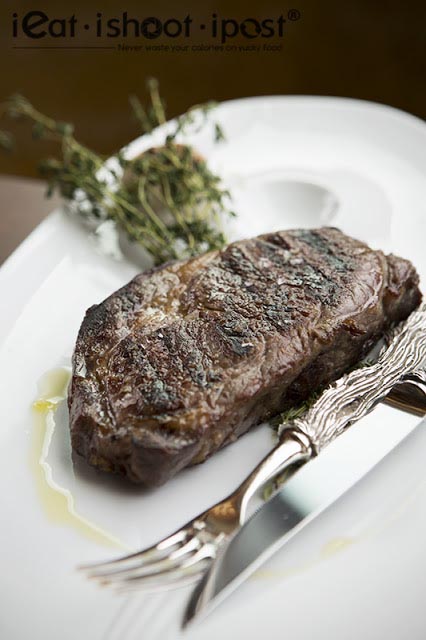
But dry aging is a different process altogether. It requires quite a lot of knowledge and expertise because you need to be able to control the bacteria levels which depends on humidity, temperature and timing. It isn’t easy to get right, but it does produce a very different steak!
Skirt has just begun aging their meats and so far most of the meats are undergoing a 2 week aging process in their aging cabinets. They procure very good quality beef from several farms from around the world and in this post, I want to feature some of these.
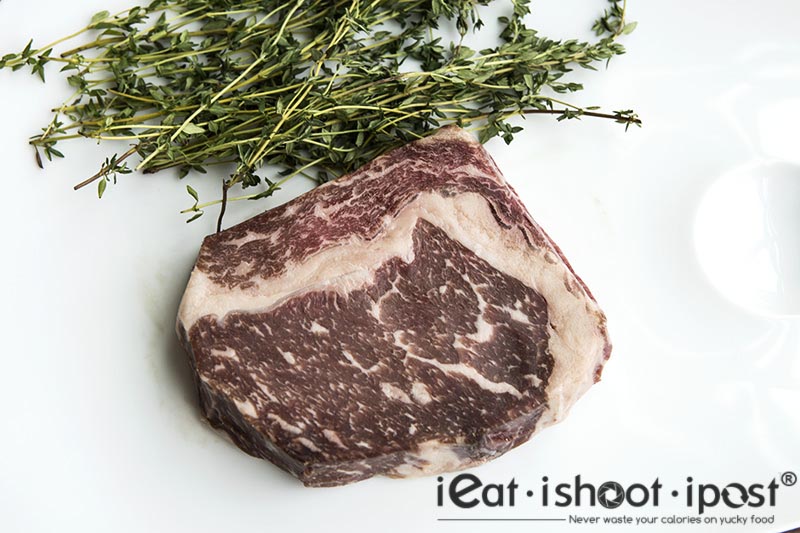
Let’s start with the steak which I feel gives the most bang for the buck. The Tajima Wagyu is a cross between the Japanese Tajima and Holstein cattle and has recently won the Award for Australia’s best steak. Skirt brings in a grade 5/6 ribeye which I feel has just right amount of marbling for a steak. I have eaten grade 9 Wagyu steaks before and I find them a little too rich. When you eat steak, you want to chew on meat, not get jerlak on fat!
The Tajima has that good balance of flavour and juiciness and is wonderfully tender yet has enough chew to make it feel like meat. It has been aged for 2 weeks which I feel is still a little young. At this stage, Chef tells me that is is still very much experimenting to see the optimum time to age his beef, so I am hoping to see him pushing it to at least 4 to 5 weeks!
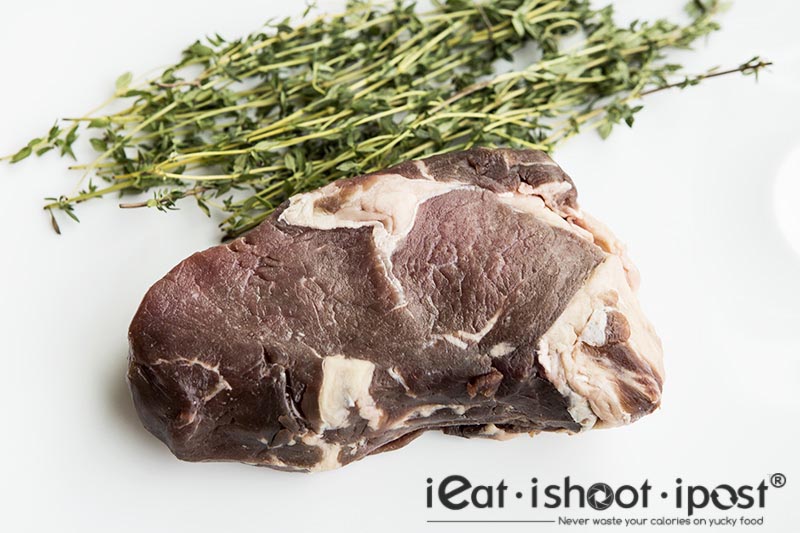
Argentina is famous for its grassfed beef and I have read a lot about them. Beef connoissuers will tell you that grassfed beef is natural and has a more beefy flavour. The downside is that there is usually less marbling than grain fed beef. I am sort of sold to the concept of grass fed beef, having read Mark Schatzker’s book “Steak” which proclaimed Angus Mackay’s Highland Beef to be the best beef steak in the world. The highland beef has little marbling but is extremely tender and flavourful. So, I have been waiting to find such a holy grail of a beef steak!
The Argentinian Ribeye was unfortunately, not that holy grail I was seeking. Being grassfed, it does have a beefier, metallic flavour. My personal opinion is that it is a little too lean to be dry aged. The interesting thing about Argentinian cattle is that the ribeye tends to be smaller in cross-section than the American or Japanese breeds, so the same 350g ribeye is one and a half inch thick!
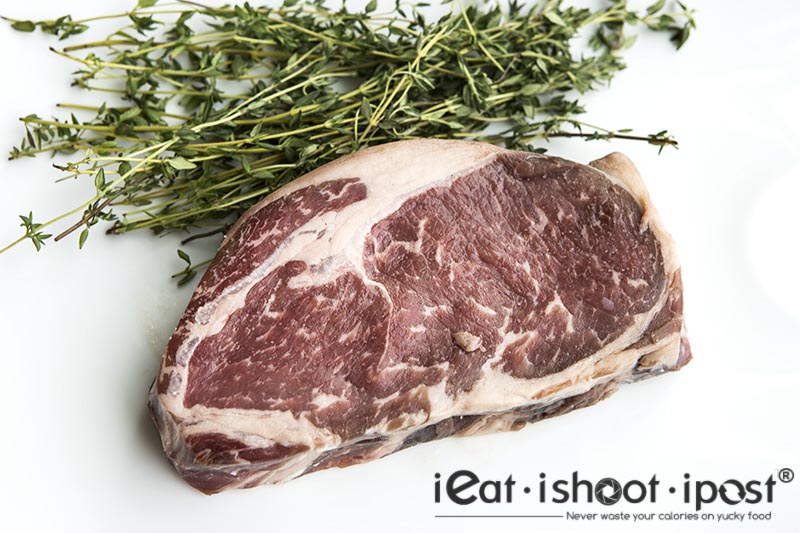
Skirt’s US beef comes from Creekstone Farm which produces excellent quality beef from Black Angus cattle which have been grazing in natural pasture for most of their lives before finishing off on corn. It prides itself for raising cattle that is 100% natural meaning that the cattle feeds on natural feeds and do not get any antibiotics or hormones. They made the news for wanting to test all of their cattle for mad cow disease as a form of assurance for their customers but was shot down by the USDA who refused to sell them enough kits to test all their cows for fear of increasing cost of beef across the board!
Since the cattle was fed mainly on grass it wasn’t as marbled as some of the other USDA prime steaks I have come across. It was however, very tender and flavourful and this would have been my first choice if not for the Tajima beef.
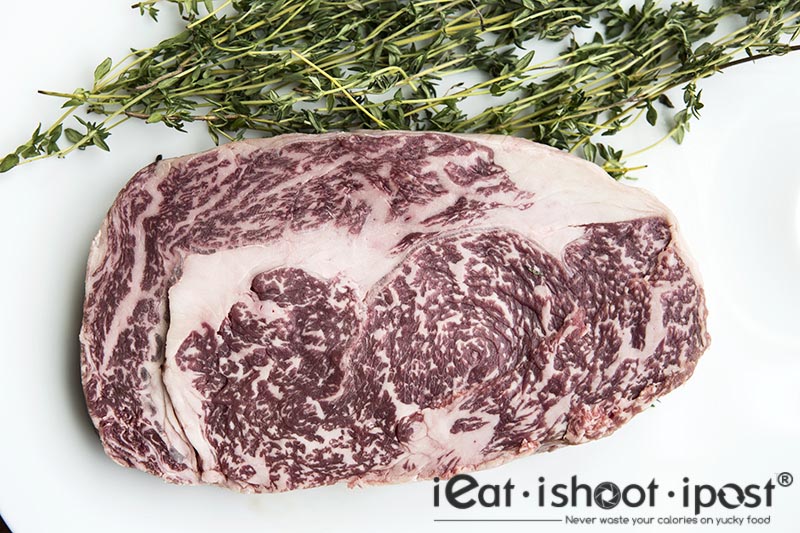
For those who still prefer a Wagyu steak, Skirt carries Blackmore’s Grade 9 Wagyu which is one of the best Wagyu coming out from Australia. I have written much about Wagyu in previous posts so I won’t repeat myself here. Wagyu is of course very tender and very juicy and I love to eat it as Shabu Shabu or thin slices lightly grilled over charcoal. But it is just a little too rich for a steak, plus it is also very expensive to eat as a steak. Having said that, it is still a beautiful piece of meat which I find hard to say no to. (Note that this is not dry aged)
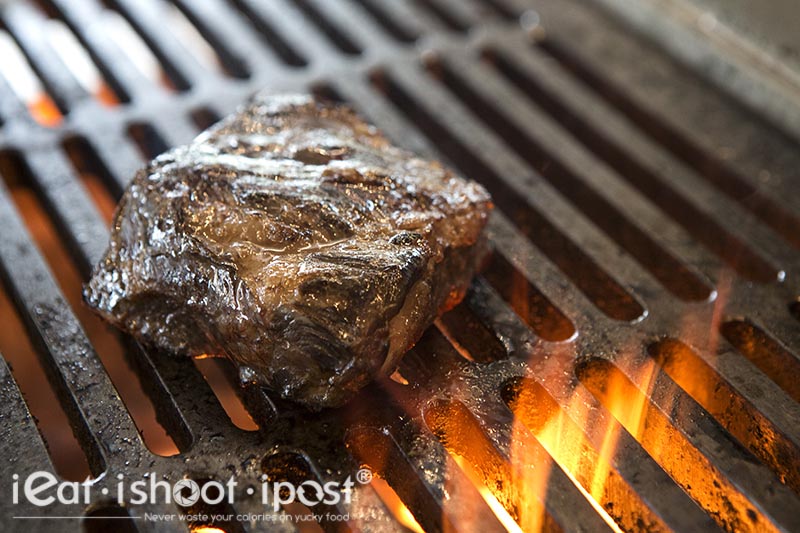
Now, lately I have been writing about using the less popular cuts like short rib for steaks. Cuts like short ribs are not traditionally used for steaks (unless you are Argentinian) because they are just a little too tough in general. However, you can tenderize them by slow cooking them in a water bath for an extended period of time and then charring them over the grill. (Read my home experiment here). In case you find it too laborious to do at home, then I am glad to report that you can try the Sous Vide Short Rib here at Skirt!
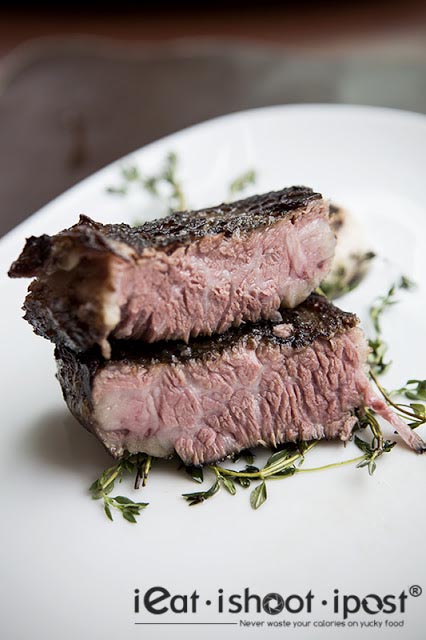
Chef uses the USDA Creekstone shortribs and slow cooks them in the waterbath at 56 degrees celcius for 48 hours till they are fork tender! I have heard people describing steak as being as tender as butter but I have never really experienced it until now. The meat is so tender and flavourful that I would find it difficult to choose between having this or having a ribeye steak! I am, however a little perplexed as to why Chef priced this at $58 which is the same price as the Creekstone Ribeye that is 100g more! I guess, he must have taken into account the 48 hours in the waterbath as added value. But what about the 2 weeks the Ribeye has spent in the dry aging cabinet and subsequent loss of water weight and wastage in carving out crusted surface of the meat?
Conclusion
Skirt promises to be one of the prime steak destinations in Singapore. They source very good quality meats and their prices are reasonable. $62 for a 250g Tajima Wagyu Ribeye in such a premium location as Sentosa Cove is very good value and their sides are also priced very attractively at $8. (Read my Ruth Chris post to compare!) Chef will probably need a few more months before he works out the optimal time for dry aging the meats. I am hoping that by then, we will get to taste the best steak in town. But if you are after a great steak, then the Tajima Steak here has just the right combination of price, beefiness and tenderness that would satisfy any beef lover. 4.25/5
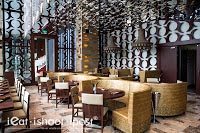
Many thanks to W hotel for their assistance in this editorial



